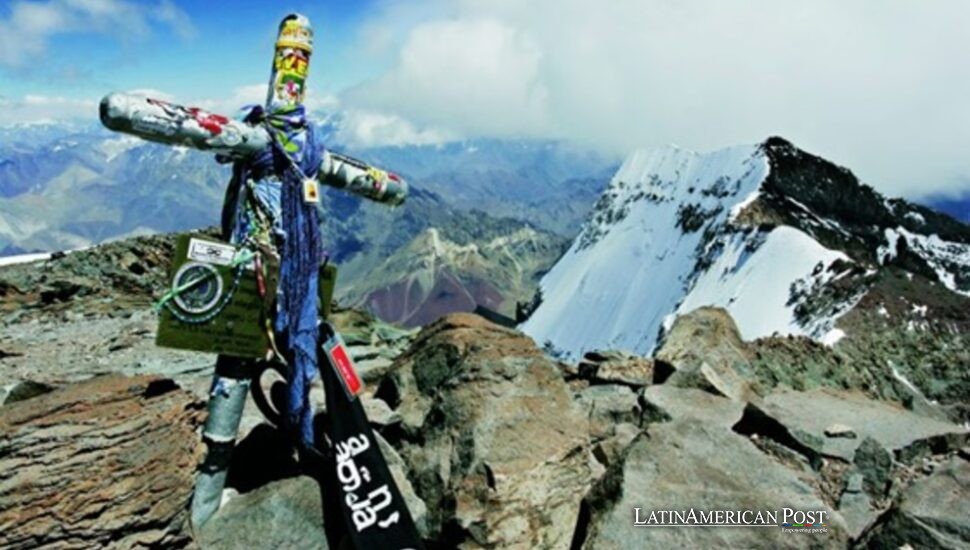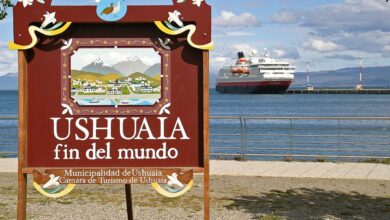Argentina’s Frozen Mystery: The Unresolved Fate of Dr. Janet Johnson

This true crime feature unravels the haunting tale of Dr. Janet Johnson, an experienced climber who vanished on Argentina’s Mount Aconcagua. Was she simply a victim of the mountain’s brutal conditions, or did something far more sinister occur? We investigate.
A Towering Challenge in Argentina’s Andes
Mount Aconcagua, soaring to a formidable 22,838 feet, is the highest summit in the Andes and the tallest peak outside Asia. Perched in Argentina’s Mendoza Province, it lures adventurers from all over the world. Many choose the so-called “normal route” on the North Face, a path celebrated for being technically straightforward—so much so that Aconcagua is often labeled the “tallest non-technical mountain in the world.” But any sense of “easy” is dangerously deceptive: severe cold, fierce winds, punishing altitudes, and the mountain’s unforgiving dryness lead to fatal outcomes every year.
The mountain has a reputation for a climb with few complications, but the statistics show a more serious situation. Argentine authorities have strict rules that work to lower injuries and rescue numbers. Aconcagua shows a fatality rate that causes concern. A perfect balance between boldness and careful action is challenging to achieve at a peak. It requires respect, even from climbers with much experience.
Decades of documented ascents underscore its fearsome credentials. Early attempts in the late 19th century highlight the mountain’s unpredictability. From German mountaineer Paul Güssfeldt, who reached over 21,600 feet in 1883, to the 1954 French expedition that established one of the most treacherous climbing lines on the South Face, these stories reflect the common understanding that altitude, unpredictably cold weather, and the psychological toll of the climb can conspire to create lethal situations.
Still, none of these dramatic ascents or tragedies quite captured the mystery that emerged with the case of Dr. Janet Johnson in 1973. Her disappearance—and the subsequent recovery of her body under suspicious circumstances—sparked a frenzy of speculation about whether she met her fate purely at the hands of the mountain or through a more sinister twist.
The Mysterious Life of Dr. Janet Johnson
Born in Minneapolis, Minnesota, on November 30, 1936, Janet Johnson grew up with adoptive parents who had hoped to shape her into a traditional life path. Instead, Janet found her true passions elsewhere: education, adventure, and the freedom of high-altitude mountaineering. When her parents discovered she was gay, they attempted to change her orientation by sending her to a hospital, pushing Janet to break free from family constraints altogether.
By 1971, she had earned a PhD in Education from the University of Colorado. She used her expertise as a librarian in Denver while avidly pursuing her real love: climbing. Janet’s enthusiasm for high altitudes was relentless—some said she was fueled by a desire to prove her worth, especially to a world that doubted women climbers and marginalized LGBTQ+ individuals. She joined various mountaineering clubs, frequently traveled to summits around the globe, and was known to document her journeys with stunning photography.
So when a legal professional and climbing enthusiast named Cary Roy Defo advertised a bold expedition to tackle Mount Aconcagua’s Polish Glacier route—the more challenging northeastern ascent—Janet pounced on the chance. The route has a name – Polish climbers first used it in 1934. This path is very steep and covered in ice. Harsh weather makes the already high altitude more difficult. For powerful mountaineers, it provides a remarkable challenge.

Credit Bill Eubank 1973
An Expedition Riddled with Red Flags
The climbing group had eight people – Cary Defo led. With Dr. Janet Johnson were:
Bill Zeller: a police officer known for his physical fitness
Arnold McMillan: a dairy farmer by trade but strong-willed
John Cooper: a NASA engineer with a background in geological engineering, Coast Guard service, and even deep-sea diving
Bill Eubank: a physician, potentially invaluable if injuries or illness struck
Jim Petroski: a mental health professional able to monitor signs of altitude sickness and confusion
John Shelton: a college student proficient in Spanish, an essential skill for coordinating with their local Argentinian guide
Miguel Alonso: the hired guide who had climbed Aconcagua multiple times (albeit with limited experience on the Polish side)
Defo was a professional lawyer and considered an experienced climber, though critics note his attempts at strong organization fell short. Some members joined pre-climb training hikes, but ironically, neither Janet nor John Cooper participated in those, meaning most of the team only truly got to know them during the journey to Argentina in January 1973. The group dynamic was precarious at best for a trip that demanded intense coordination.
They started their ascent on January 20, establishing a base camp at 13,500 feet. From there, they planned subsequent camps at 15,500 feet (Camp 1), 18,000 feet (Camp 2), and 19,400 feet (Camp 3) before attempting the final climb to the summit at 22,838 feet. Within a few days, cracks in the team’s preparedness emerged: altitude sickness struck some members, including the expedition’s designated physician, Bill Eubank. Morale wavered, and a number of the climbers, including Defo, retreated to lower elevations due to fatigue or illness.
When the final summit push was organized, the “hardy four” planning to go all-in were Janet Johnson, John Cooper, Bill Zeller, and Arnold McMillan. Their guide, Miguel Alonso, and the rest of the team were either lower on the mountain or out of the running due to health issues. The four climbers moved forward, taking few provisions. They planned to reach the top fast and return to Camp 3 within 24 hours.
The Fateful Summit Attempt
Of course, the summit push did not go as planned. The group incorrectly assessed the distance and challenge of climbing the Polish Glacier. Difficult ground, powerful winds, and rapidly decreasing temperatures slowed them down considerably. When daylight waned, they decided to dig a rough snow cave and survive the night with limited shelter—having left much of their heavier gear back at Camp 3.
By sunrise, John Cooper had had enough. Exhausted and freezing, he abandoned the summit attempt to descend alone. As the NASA engineer—renowned for his calm nerves and methodical thinking—stepped away, Bill Zeller and Arnold McMillan continued upward with Janet, inching ever closer to the top.
According to the men’s later accounts, something went wrong on the descent. Janet allegedly lagged or strayed off course. When Zeller and McMillan located her, she said, “Don’t make me suffer. Just let me lay here and die.” Describing these events would be complicated by the high altitude and hypoxia. By their admission, Zeller and McMillan were disoriented, experiencing hallucinations and confusion.
Soon after, the trio agreed that McMillan would go alone to seek help while Zeller stayed behind with Janet. McMillan lost his footing and slid 1,000 feet but survived with minimal injuries. His priority then became reaching Camp 3 at nearly 19,400 feet. Meanwhile, Zeller and Janet also fell and got separated. Zeller stumbled onto another shocking discovery: the frozen body of John Cooper, lifeless on the slope, apparently without traumatic injuries that would explain such a fate—other than a severe head injury discovered in a later autopsy.
Instead of turning back for Janet, Zeller continued down to Camp 3 alone, convinced that Janet was “doing better” and would follow. By morning, she had not arrived. That was the last time anyone saw Janet Johnson alive.

Credit: Janet Johnson
Was It Murder or the Mountain?
Initially, Argentine authorities pursued the possibility of rescue, not murder. Yet the stories from the survivors did not match perfectly. Conflicting timelines and contradictory details sparked gossip among the climbing community. When investigators combed the Polish Glacier, they located John Cooper’s body. An examination revealed puzzling injuries: a round puncture wound near his abdomen—possibly from an ice axe—and head trauma consistent with blows or a severe fall. The official cause of death was cranial contusions, leaving open questions: Did Cooper collapse and strike his head? Did someone else’s equipment strike him during a panicked moment on the ice?
Two years later, in February 1975, local climbers found Janet Johnson’s body just 65 feet from where Cooper was discovered. A large rock sat atop her corpse, and her face bore extensive injuries. An autopsy confirmed a fatal brain injury. While these findings are not impossible to reconcile with a fall on an icy slope, some investigators found it odd that she came to rest on a gentle incline instead of a steep chute where one might logically end up after sliding.
No formal criminal charges emerged—political turmoil in Argentina soon overshadowed the inquiry. Family, friends, and the climbing community were left with swirling theories:
Accidental Hypothermia and Falls: The simplest theory posits that both Cooper and Johnson succumbed to altitude sickness, exhaustion, or hypothermia. Their wounds could have come from uncontrolled slides, collisions with ice, or attempts to self-arrest with axes.
Foul Play in the Thin Air: Others suspect that tension or panic among the climbers boiled over, resulting in deliberate harm. Personality differences and even animosity toward Janet for her sexual orientation or her perceived “selfishness” as a climber have been mentioned in some conspiracy circles.
Disoriented Survivors: Bill Zeller and Arnold McMillan, who were the last to see Janet, insisted they were not physically or mentally fit to help her or even comprehend the seriousness of her condition. They believed she would catch up and that Cooper had already reached Camp 3 safely. The altitude and confusion remain plausible explanations for their seemingly heartless decisions.
Further muddying the waters, in 2020, a group of mountaineers stumbled upon Janet Johnson’s camera gear and film canisters—frozen relics from that fatal expedition. Hopes soared that the images might clarify the final hours. While the film was developed successfully, it revealed only scenic shots of happy climbers near the peak: no hidden confessions, no glimpses of an altercation or sinister wrongdoing.
In the intervening years, many key figures have passed away. Cary Defo died in a vehicle collision in 1975, Bill Zeller in 2003, and Arnold McMillan in 2011. The last survivor from the expedition, John Shelton, died in November 2023. None left any revelatory last-minute admissions, ensuring that speculation endures.
Accidental Death or Murdered on Mount Aconcagua?
The physical evidence is inconclusive, and the official stance has defaulted to “tragic accident.” The differing accounts and the questionable details relating to Cooper’s and Johnson’s injuries continue this unresolved situation. In a location with deadly conditions such as Aconcagua, the difference between a fatal environment plus possible criminal behavior is dangerously small.
The story of Dr. Janet Johnson is emblematic of the perils of high-stakes mountaineering—where factors like altitude sickness, frigid conditions, and group cohesion can determine life or death in hours. But it also underscores how quickly suspicion arises when a tragedy involves incomplete recollections and perplexing injuries.
Mount Aconcagua, with its regular route seen as “uncomplicated,” has long beckoned climbers looking to stand atop the Western Hemisphere’s highest point. Yet the mountain’s isolation and punishing conditions remain brutal equalizers. In 1973, that harsh reality collided with human error—and perhaps something far more malicious.
Despite forensic efforts, witness interviews, and the surprising discovery of Janet’s camera film decades later, the final moments of Janet Johnson and John Cooper remain clouded. Many who examine the facts ask the same question: Did the mountain alone claim their lives, or did human decisions—and potential hostility—seal their fate?
Whatever the actual cause, one can only hope those who push their limits on Argentina’s mighty summit learn from the heartbreak. Respect for the mountain, honesty among team members, and thorough readiness can be the difference between a triumphant success story and a grim, unsolved tragedy. For Dr. Janet Johnson, the ultimate answer lies lost to time in the unforgiving snowfields of Aconcagua.
Also Read: Fans Roar as Colombian Songstress Shakira Revisits Her Immigrant Tale
Disclaimer: This article is based on publicly available information, historical records, and true crime experts’ speculation. No new definitive legal conclusions other than those described have been reached regarding the events described.




